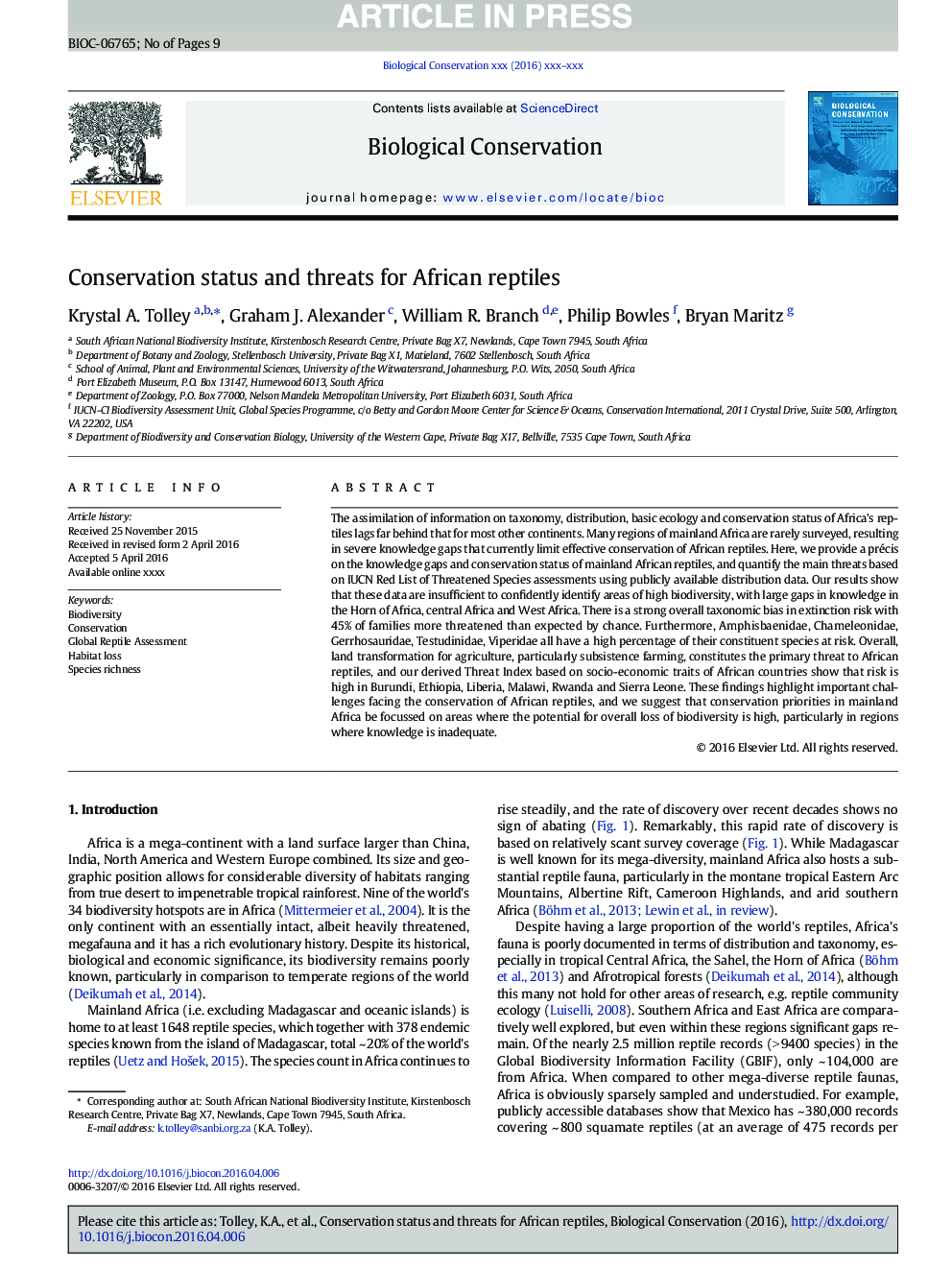| Article ID | Journal | Published Year | Pages | File Type |
|---|---|---|---|---|
| 5743376 | Biological Conservation | 2016 | 9 Pages |
Abstract
The assimilation of information on taxonomy, distribution, basic ecology and conservation status of Africa's reptiles lags far behind that for most other continents. Many regions of mainland Africa are rarely surveyed, resulting in severe knowledge gaps that currently limit effective conservation of African reptiles. Here, we provide a précis on the knowledge gaps and conservation status of mainland African reptiles, and quantify the main threats based on IUCN Red List of Threatened Species assessments using publicly available distribution data. Our results show that these data are insufficient to confidently identify areas of high biodiversity, with large gaps in knowledge in the Horn of Africa, central Africa and West Africa. There is a strong overall taxonomic bias in extinction risk with 45% of families more threatened than expected by chance. Furthermore, Amphisbaenidae, Chameleonidae, Gerrhosauridae, Testudinidae, Viperidae all have a high percentage of their constituent species at risk. Overall, land transformation for agriculture, particularly subsistence farming, constitutes the primary threat to African reptiles, and our derived Threat Index based on socio-economic traits of African countries show that risk is high in Burundi, Ethiopia, Liberia, Malawi, Rwanda and Sierra Leone. These findings highlight important challenges facing the conservation of African reptiles, and we suggest that conservation priorities in mainland Africa be focussed on areas where the potential for overall loss of biodiversity is high, particularly in regions where knowledge is inadequate.
Related Topics
Life Sciences
Agricultural and Biological Sciences
Ecology, Evolution, Behavior and Systematics
Authors
Krystal A. Tolley, Graham J. Alexander, William R. Branch, Philip Bowles, Bryan Maritz,
